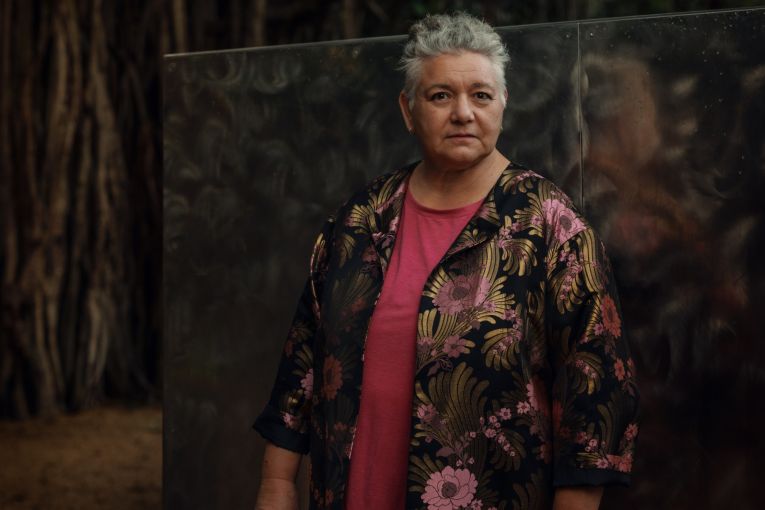Purrfect book for literary cat lovers gives paws for thought
Cats have inspired everyone from Ancient Egyptians to the literary lights of the Western canon – and a new book about writers and their cats honours this feline influence.

Writers and cats share many traits – solitude, aloofness, introversion, particularity and precision. So it is perhaps unsurprising that author and literary lecturer Susannah Fullerton has chosen to focus her keen eye on the enduring relationships between well-known writers and their cats in her latest book, the unabashedly lovely and engrossing Great Writers and the Cats Who Owned Them.
Billed by its publisher as “a fun, charming romp through the history of seventeen great writers and the cats who captured their hearts”, the book is indeed fun and charming, but it is also witty, moving, insightful and deeply resonant for those who love cats and words, be it as either a reader or a writer.
Since cats were first domesticated and since human beings first began to write, there has been a happy conjunction between authors and felines. Writing is a largely solitary task and the companionship of a cat can be a relief, a solace, a comfort and an inspiration to authors.
Cats are, after all, silent creatures: they don’t need to be taken for walks, which might interrupt creative flow; stroking a cat’s soft fur provides pleasure without distraction; and a cat can also provide a gentle nudge back to reality when a writer is lost in their imagined world.

As Fullerton notes, studies show that cat ownership reduces stress, and writing can often be a stressful task. Like cats, writers are sharp observers, so a fellow feeling develops between the writer who watches and the cat whose eyes unblinkingly watch his or her world.
You might like
The symbiotic relationship between writer and cat illustrates our desire for compatibility with those who share our loving space. And when writer’s block impedes progress, perhaps inspiration can be found by turning one’s thoughts to a beloved feline companion. Cats even function as alarm clocks, with their persistent need for breakfast often rousing an author from bed.
No other animal combines so successfully intelligence, insouciance and inscrutability, all wrapped up in a soft and elegant package. The elusiveness of cats, their changeability as they switch from loving pet to ferocious predator, is surely part of their appeal to craftspeople trying to grasp a fictional world or to capture exactly the right word.
The fastidiousness of cats is understood by a person equally fastidious about words. It’s hardly surprising that, throughout history, the cat has been permitted to sit on manuscripts, curl up on desks, take swipes at moving quills and pens, and curl up contently on an author’s lap.
Edgar Allan Poe wrote that his cat, Caterina, was curled around his shoulders. Jean Cocteau thought his cats were “the soul of home”. James Herriot described the feline species as “connoisseurs of comfort” in his beloved veterinary stories, while Raymond Chandler regarded his black cat, Taki, as his secretary.
Ray Bradbury saw his 22 beloved cats as an integral part of his creative process. Jorge Luis Borges wrote poems to his felines. Iris Murdoch observed her cats as a way of getting inside the minds of her characters. Contemporary Japanese novelist Haruki Murakami even promised to write a book, only if his publisher would cat-sit while he went travelling in order to do so.
So many famous authors have loved their cats, from Aldous Huxley to Anais Nin, Anton Chekhov to W. Somerset Maugham, Charles Baudelaire to Jack Kerouac, H.G. Wells to Gillian Flynn. Every good writer, it seems, needs a feline muse.
Subscribe for updates
Patricia Highsmith, a wonderful novelist who was not renowned for her warm demeanour, once said: “My imagination functions much better when I am surrounded by cats and don’t have to speak to people.”
After Highsmith’s death, her cat, Spider, ended up in the custody of her friend and fellow writer, Muriel Spark. Until the end of his days Spider kept Spark company in her study, curled around his favourite object: Highsmith’s typewriter. Highsmith immortalised her love for cats in one of her best short stories, Something the Cat Dragged In. Spider had brought his mistress a trophy – a human finger he found while fossicking outdoors – and the rest of the story became an unforgettable tale of tension between the endlessly curious nature of cats and the often-violent propensities of humans.
In Great Writers and the Cats Who Owned Them, Fullerton traverses the writing lives and relationships with their cats of 17 diverse writers from across history: Dr Johnson, Horace Walpole, Robert Southey, Alexandre Dumas, Edward Lear, Charles Dickens, Mark Twain, Colette, Lucy Maud Montgomery, Sir Winston Churchill, Ernest Hemingway, Margaret Mitchell, Dorothy L. Sayers, Paul Gallico, Muriel Spark, Doris Lessing and beloved children’s book writer Lynley Dodd.
Fullerton does so by carefully parsing their lives and their works for parallels and interactions with their beloved cats, as well as poring over personal papers that include research notes, private correspondence, journals and diaries.
delightfully shrewd anecdotes abound in this deeply researched and beautifully written volume
I will confess that some of the essays I found personally most interesting do happen to be about writers whose work I have loved – Colette, Lessing, Montgomery and Spark, foremost – but the story of Montgomery’s relationship with her cat, Daffy, is undeniably a beautiful one. In 1892, she jotted down an idea for a potential novel in her journal: “Elderly couple apply to orphan asylum for boy. By mistake a girl is sent to them.”
Astute readers will know, of course, that this thought became the seed for the world of Anne Shirley and Montgomery’s beloved Anne of Green Gables and Avonlea novels.
Montgomery grew up lonely, an only child on a farm in rural Canada, with few friends, but it was as a young woman that she found in Daffy a tender and loyal companion. Daffy was with her throughout the birth of Anne of Green Gables and sat on her lap, huddled in her coat and blankets, keeping her warm on cold mornings as she tried to write.
For Montgomery and also for Sayers, Spark, Lessing and Dodd, cats had been a constant in their lives since they were young, always regarded as soulmates. When mystery writer, playwright, poet and religious writer Sayers died, the very last living creature her eyes beheld was a cat, as there were three sharing her home at the time of her death.
Spark, Fullerton writes, was “rather like a cat herself” – impeccably groomed, secretive and reserved, fiercely independent and with a tendency to spit when attacked. Such delightfully shrewd anecdotes abound in this deeply researched and beautifully written volume.
Great Writers and the Cats Who Owned Them by Susannah Fullerton, Bodleian/NewSouth Books, $34.99.
newsouthbooks.com.au/books/great-writers-the-cats-who-owned-them

